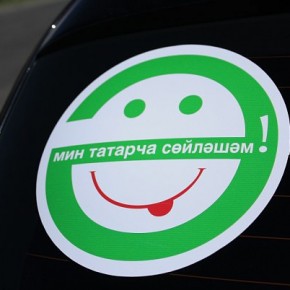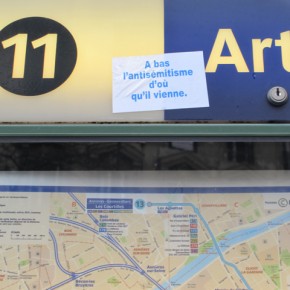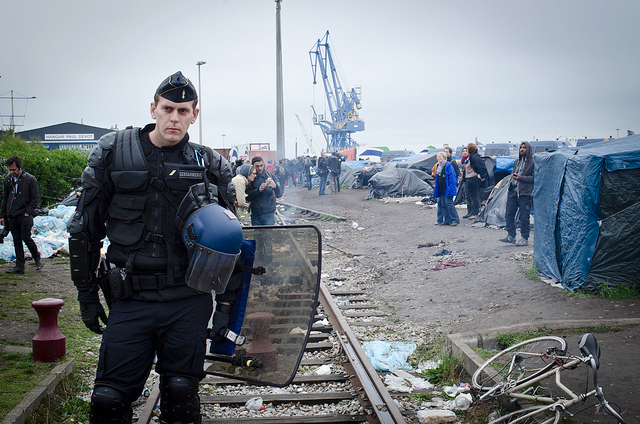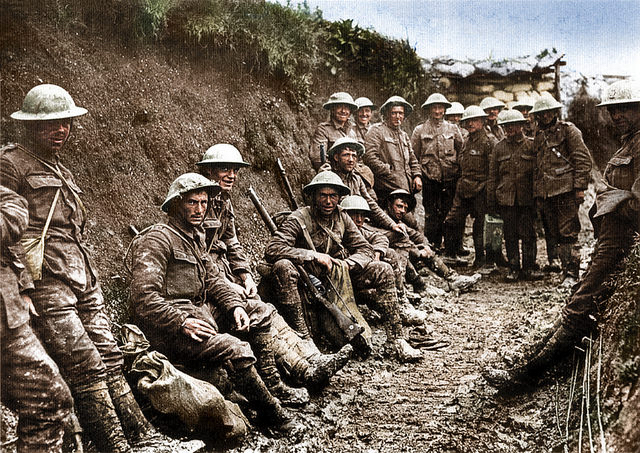I don’t share my compatriots’ technological instincts. Fortunately, the AT & T store on Burbank’s San Fernando Boulevard is staffed by Armenians who swiftly diagnose my phone’s problem. Garen and I conclude our business, and talk about ourselves. “I already realised you don’t speak Armenian,” he says. His chuckle has an edge. I switch to Russian, hoping to connect with his Soviet childhood. After many years in London and Los Angeles, his Russian is still flawless.
“The Middle Eastern Armenians have a different mentality from the Soviet Armenians,” he tells me. “I tried to get to know them when I moved here, but people didn’t really want to chat.” Garen is a polyglot cosmopolitan. His daughter plans to attend Oxford University.
Armenian and Spanish are ubiquitous on San Fernando. According to the 2010 US census, Hispanics form a quarter of Burbank’s population, while Armenians are a large slice – though no precise figure exists – of the 58 percent defined as “White persons not Hispanic.” Asians represent 11 percent, and African-Americans just 2.5 percent.
Less than a minute’s walk from AT & T, Lily runs her café with several doses of Garen’s outgoing personality. Far from the image of the gruff Armenian shopkeeper, she works the room with a Californian charm, wearing a blouse that owes something to David Hockney’s colours. The customers chatter in English, Spanish and Polish. During a lull, she tells me that she immigrated from Soviet Armenia more than thirty years ago. I ask her about the mentality gap that Garen mentioned.
“Some Armenians from the Middle East think they’re the real Armenians. But if I speak my Yerevan dialect they won’t understand me, but I’ll still understand them.” The relationship is complex, as a visit to Café O, opposite Lily’s, confirms.
Iraq City Would Be More Apt
On a perfect spring night, Mikael, an Armenian whose parents came from Beirut, lounges on the terrace listening to Tyga’s Rack City (Bitch) on his iPod. “Iraq city chick” would be more apt. Girls in knee-high black boots sit at their own table, sometimes glancing across at the shisha-smoking, card-playing men; strangers, boyfriends, or perhaps sugar Baghdaddies. Like young Arabs, they wear blue jeans and black leather jackets.

“We didn’t have a communist state providing for us in Lebanon,” Mikael says. “We had to survive on our own in a civil war. And we still kept our political debate and our (Armenian) political parties alive.” He dismisses the idea of a superiority complex, but the youth here have a swagger. You sense they’ve transferred their entrepreneurial skills from Baalbek to Burbank while attending US colleges and universities. American culture? They can take it or leave it.
Some Armenians never took it. Pacific Manor and Harvard Plaza are two large apartment blocks in the heart of downtown. Both are Armenian enclaves housing senior citizens. Of the six residents I approach individually, three speak no English at all. Yet the Stars and Stripes fly from every balcony. The receptionist explains that these are put out in gratitude to the government for its subsidy, which keeps rent at around 220 dollars a month for a single person. When you consider that Americans over 50 have trouble finding work, it’s not surprising that a fiftysomething Armenian seeking refuge from a war or an earthquake would end up here. But do the Stars and Stripes give these seniors any sense of belonging? An Iranian-Armenian lady smiles at the question. “Well, we are in America, so we should feel American.” But she admits she rarely makes friends with other Armenians outside her Iranian-Armenian community in the building. So, perhaps there is a long way to go before integrating into American society.

I spot a rug drying on a balcony rail next to a flag. And it’s those rugs – put out by “ghetto” Armenians – that trigger visceral national stereotypes. One online forum has comments such as this: “They are dirty, smoke all the time and stare at you…they wash their rugs constantly….I hate their culture and attitude.” Another forum is thick with references to illegal money activities. News coverage of periodic raids on Armenian Power, a criminal organisation located in Los Angeles Country, does little to dispel images of the dodgy Armenian.
Towel Head
Clichés have consequences. This April 5, Steve Karagiosian, an Armenian-American police detective, was awarded 150,000 dollars in damages for harassment based on his ethnicity. Sustained findings from an investigation showed that one fellow officer called him “towel head,” “stupid towel,” “Harapet” (a generic insult akin to the German slur “Kanacke” against ethnic Turks) and told him he had been promoted only because he was Armenian. But that wasn’t all.
“In the trial, 10 to 12 officers were implicated in anti-Armenian-based misconduct. That represents just under 10 percent of the city police force,” Karagiosian’s attorney told Souciant.
Solomon Gresen added: “Of particular concern is that evidence of Armenian-based profiling was presented at trial. The jury heard testimony that a cheat sheet (ed: something pupils stuff down their trousers in an exam) to ticket Armenians was discussed at roll call.” The jury did not find police supervisors liable.

The mood between Armenians and other groups in my Burbank neighbourhood feels more like polite distance than hostility. Gabriela, the owner of Café Colombia on Glenoaks Avenue, says she’s heard of trouble between Armenian and Mexican gangs elsewhere in LA, but not in Burbank. “Armenians very rarely come in here, but we don’t have problems.” The Iranians at San Marco Coffee on Glenoaks appear to stick to their own as surely as their Persian baklava sticks to your fingers. And a little further up the same boulevard, the Syriac Orthodox community has its own preoccupations. Already weighed down by waves of refugees from Iraq and hard economic times in the US, it worries about having to provide for brethren from Syria if Bashar al-Assad is toppled. Outside the Syriac church on Glenoaks, I get talking to clergymen during Easter week. One articulates the dilemma facing Christian minorities caught in the Arab Spring: “Would you prefer (General) Franco or Bin Laden?”
For a day, Armenians will suck all their neighbours’ attention. On April 24, they mark the 97th anniversary of their extermination at the hands of the Young Turk regime. Mentalities, dialects, and politics will disappear as the remnants of a murdered nation rally. The vigil will be large in Burbank, and even larger a few miles up Glenoaks Avenue in Glendale – the quintessential Armenian diaspora city. Commemorations will touch a nerve with the Syriacs, a fellow Christian minority in Turkey. They will resonate with the Iranians who fled persecution in the wake of the 1979 revolution. And they might even strike a chord with the Colombians who trudged away from economic discrimination, far-left guerrilla killers and right-wing death squads.
Then, it’s back to the daily humdrum, the fierce Californian sun reflecting off the perfectly separated tiles of this American ethnic mosaic.
Children photograph courtesy of the Armenian National Committee of America. Additional photos courtesy of the author.






I´m also an Syriac Orthodox (Aramean)